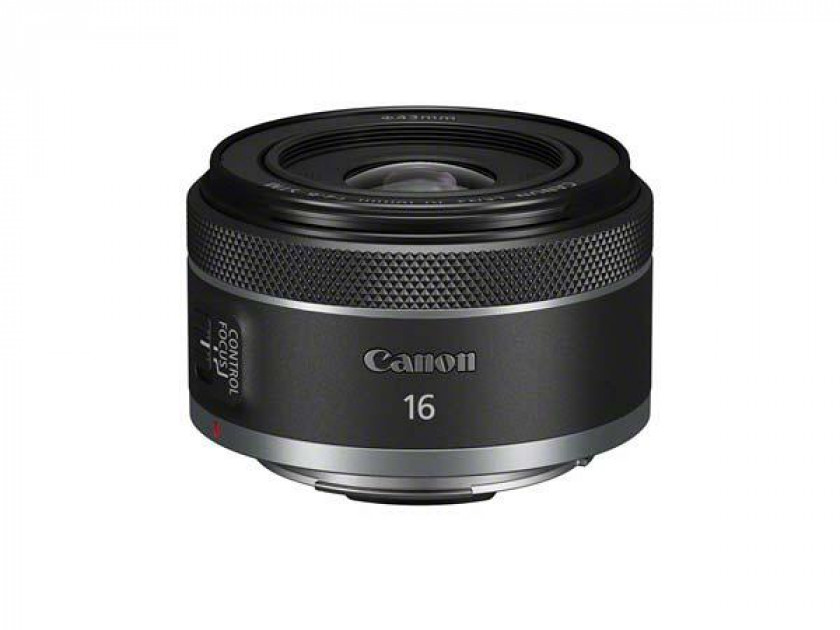Introduction
The Sigma 150-600mm F5-6.3 DG DN OS Sports is a versatile 4x super-telephoto zoom lens for Sony full-frame and APS-C mirrorless cameras. It offers an effective focal range of 225-900mm when used on an APS-C sensor camera.
The Sigma 150-600mm for Sony lens features an optical construction comprising of 25 elements in 15 groups, including 4 FLD and 2 ELD elements.
It offers an iris diaphragm with a rounded 9 blade diaphragm which creates an attractive blur to the out of focus areas of the image, 4 stops of built-in optical image stabilisation with 2 selectable OS modes, and a minimum focus distance of 58cm / 23in with a maximum magnification ratio of 1:2.9.
There’s a high-speed stepping motor with a high-precision magnetic sensor for fast and quiet autofocusing, a Zoom Torque switch which selects the zoom resistance and locks the lens barrel at 150mm, dual zoom ring operation and push/pull zoom capability, and manual override which is activated by rotating the focus ring while using autofocus.
This lens has a moisture-sealed construction including a water and oil repellent front coating and a removable rotating tripod collar/socket with a replaceable Arca-type compatible foot.
The Sigma 150-600mm F5-6.3 DG DN OS Sports lens is priced at £1199 / $1499 in the UK and USA respectively.
For L-Mount users, two dedicated teleconverters can be used with this lens – a 1.4x (TC-1411) and a 2x (TC-2011). The TC-1411 increases the lens’s reach up to 840mm and the TC-2011 up to 1200mm.
Ease of Use
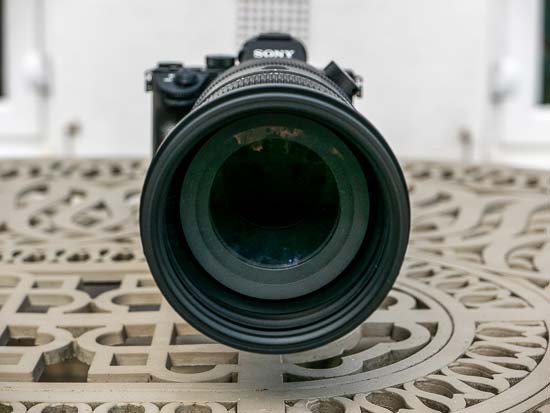
Weighing in at 2100g and measuring 26.5cm in length with a maximum diameter of 10.9cm, the Sigma 150-600mm f/5-6.3 DG OS HSM Sports is a big and heavy lens, although that weight does include the removable tripod collar/socket. It is shorter and much lighter than the DSLR version that we tested back in 2014.
As seen in the photos below, it dwarves a full-frame camera body like the Sony A7 III that we tested it with. While you can use it on a smaller APS-C body, it won’t balance very well at all (and the focal length will also change).

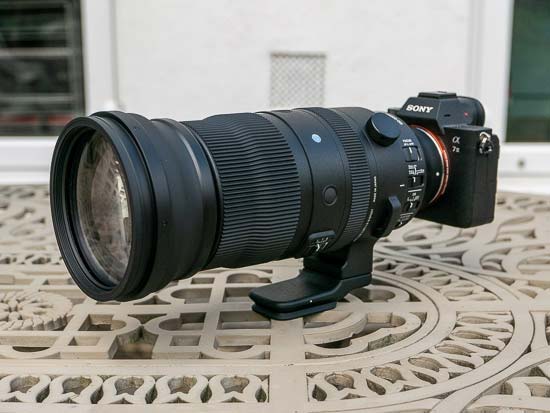
This is not a lens that you can hand-hold for very long at all, being much more at home mounted on a sturdy tripod or monopod.
The lens extends by quite a long way – about an additional 10cms – when zoomed all the way out from 150mm to 600mm. The zoom ring is generously wide and has a ridged, rubberised grip band.
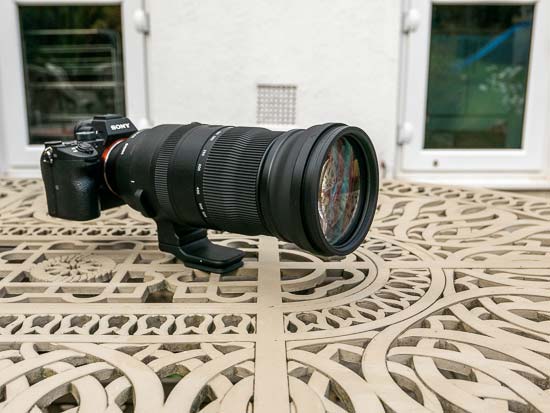
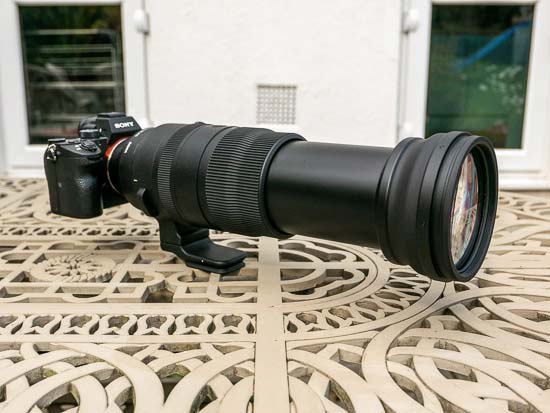
The focusing ring is much narrower, making it a little more difficult to locate in a rush, but it is well damped. There’s no distance scale and no depth of field scale on this lens.
There are no hard stops at either ends of the range, either, making it harder to set focus at infinity. Polariser users should be pleased that the massive 95mm filter thread doesn’t rotate on focus.
An AF/MF switch on the side of the lens makes it easy to switch between the two focusing systems.
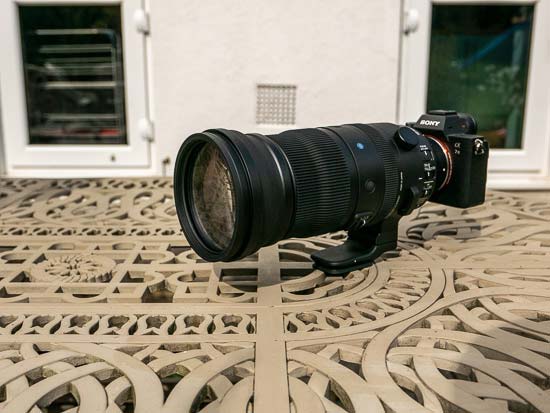
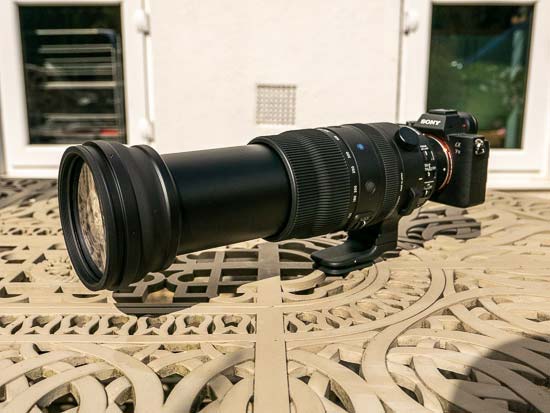
Build quality is excellent. The Sigma 150-600mm F5-6.3 DG DN OS Sports lens has a part aluminium, part Thermally Stable Composite (TSC) shell with a mixture of metallic and plastic parts used inside. It also incorporates a brass bayonet mount that’s supposed to be more durable.
The lens has a dust and splash-proof construction with a water and oil repellent front coating that should help it to withstand most inclement conditions.
In terms of features, the Sigma 150-600mm F5-6.3 DG DN OS Sports offers everything that you need from a professional telephoto zoom lens.
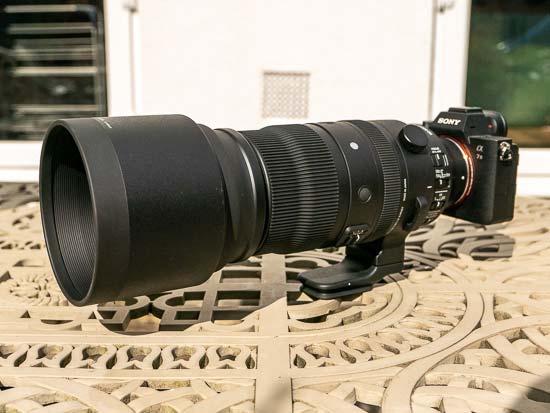
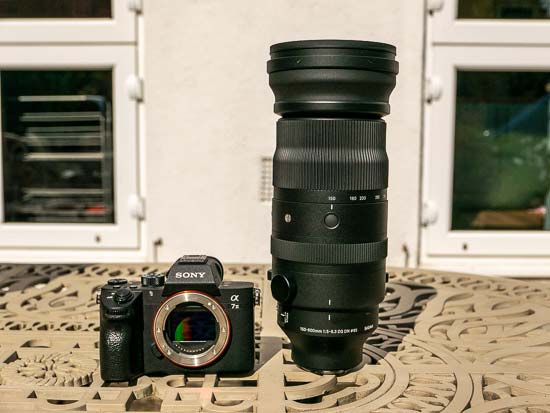
This very usefully includes built-in Vibration Reduction, activated by the OS switch on the lens barrel, which offers around 4 stops of compensation. The OS system has two modes – mode 1 is suitable for general photography, and mode 2 is best for panning shots of moving subjects .
Focusing is usefully internal and manual focusing is possible when set via the Focus switch on the lens barrel. Full-time manual focus override is also available by using the Direct Manual Focus (DMF) function on Sony cameras and then rotating the focus ring.
When it comes to auto-focusing, the Sigma 150-600mm f/5-6.3 DG DN OS Sports zoom is a quick performer, taking about 0.10 second to lock onto the subject when mounted on the Sony A7 III camera that we tested it with.
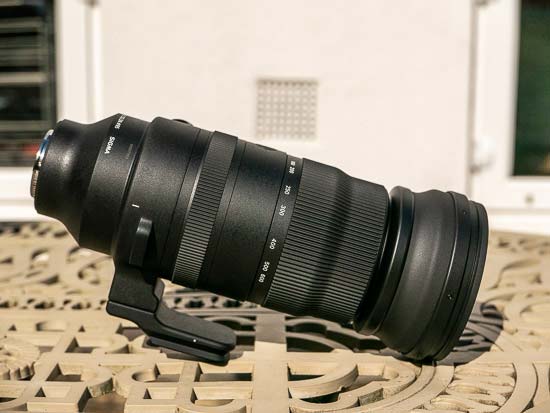
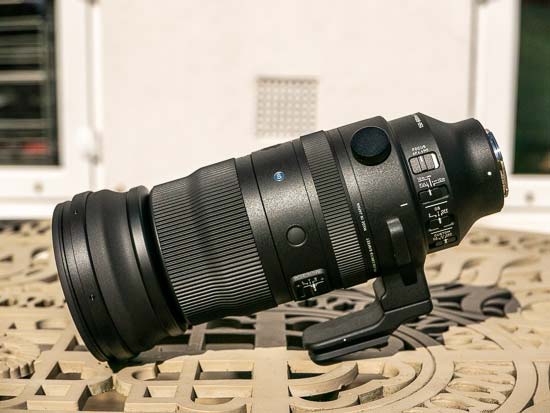
We didn’t experience much “hunting”, either in good or bad light, with the lens accurately focusing almost all of the time. It’s also a very quiet performer, thanks to the built-in stepping motor, which makes this lens well-suited to video recording.
The focus limiter switch has three settings, Full, 10m-infinity and closest focus distance-10m, which helps speed up the auto-focusing if you know how far your subject is from the lens. You can also use the Sigma USB dock to customise these ranges to your own needs.
The Sigma 150-600mm F5-6.3 DG DN OS Sports features a brand new Zoom Torque switch, which changes the resistance of the zoom ring and has three different functions (L/T/S).
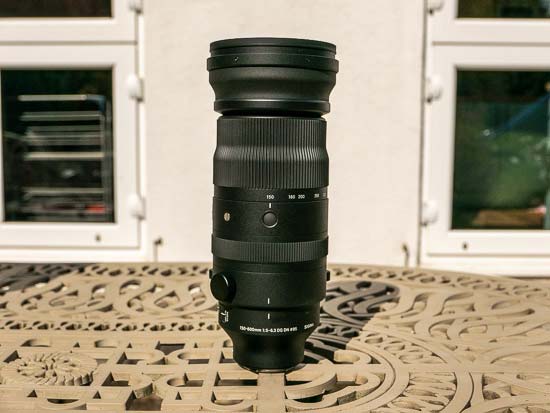

The L (Lock) setting locks the lens at its 150mm setting and prevents it from extending when it’s pointed downwards.
The T (Tight) setting puts the zoom ring resistance at its tightest setting which helps prevent zoom creep, useful when pointing the lens upwards.
The S (Smooth) setting puts the zoom ring resistance at its smoothest setting for general purpose photography.
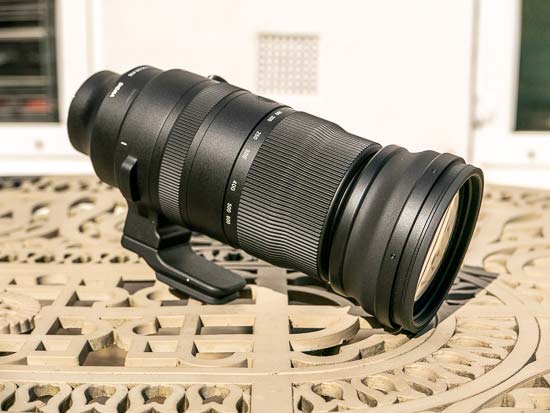
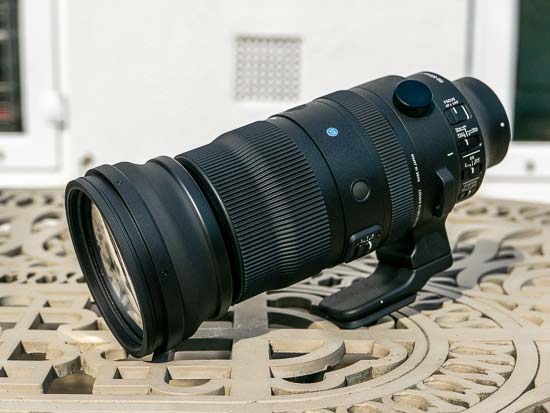
There are three dedicated Auto Focus Lock (AFL) buttons located between the zoom and focus rings that can be optionally re-configured to assign various functions to the lens barrel and there is also a Custom Mode switch with two available modes.
The Sigma 150-600mm F5-6.3 DG DN OS Sports ships with standard 95mm front lens and rear lens caps, a shoulder strap, a good quality soft case, a very large circular polycarbonate lens hood (LH1034-01) which screws into place, and a Cover Lens Cap which slides over the lens and hood when reversed to protect the end of the lens during transportation.
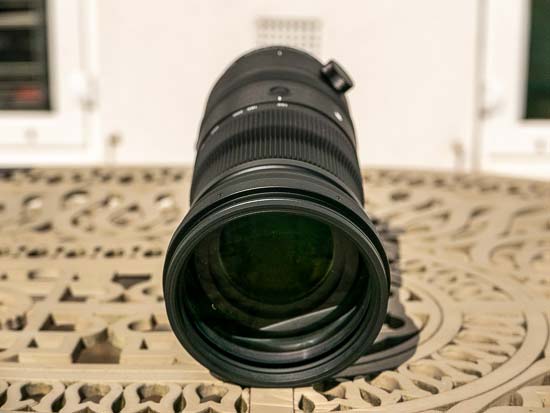
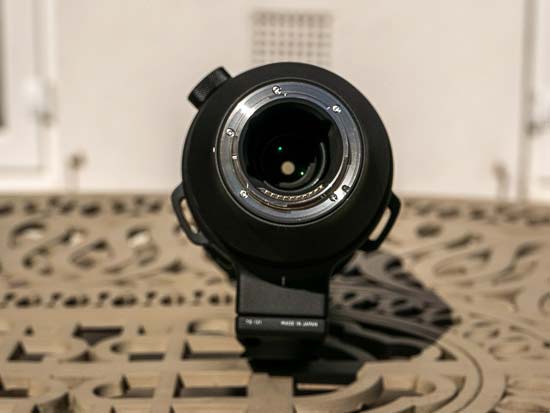

Focal Range
This lens offers a 4x focal range of 150-600mm for full-frame Sony Alpha cameras – the angle of view is 16°4’ at 150mm and 4°1’ at 600mm.

150mm

600mm
Chromatic Aberrations
Usually seen as purple or blue fringes along high-contrast edged in a photograph, chromatic aberration can be a problem for some lenses. With the Sigma 150-600mm F5-6.3 DG DN OS Sports lens, however, it is extremely well-controlled, to the extent that it’s very difficult to find examples of any kind of fringing occurring at all. An extremely impressive performance.

150mm

600mm
Light Fall-off
When shooting at the maximum aperture of f/5, you can see some slight vignetting at 150mm. It’s not hugely noticeable when shooting normal subjects, but you can see it when photographing a white wall. The effect is much more minimal when shooting at 600mm at f/6.3. Throughout the focal lengths, the problem almost completely disappears when you close down the aperture to f/11.

150mm

600mm
Distortion
There is just a small amount of pincushion distortion at 150mm, but overall the effect is well controlled and can be eliminated in editing software without a compromise on final image quality.

150mm

600mm
Macro
The Sigma 150-600mm F5-6.3 DG DN OS Sports is not really a macro lens, but the close-focus point is a useful 58cm from the film/sensor plane at 150mm and 2.8m at 600mm, and Sigma quotes a maximum reproduction ratio of 1:2.9 which is achievable at the 180mm focal length.
The following examples illustrate how close you can get to the subject with the lens set to 600mm to aid magnification.




Bokeh
Bokeh is a word used for the out-of-focus areas of a photograph, and is usually described in qualitative terms, such as smooth / creamy / harsh etc.
One of the reasons to buy a super-zoom lens like this one is to be able to isolate the subject from the background, and the Sigma 150-600mm F5-6.3 DG DN OS Sports has an iris diaphragm with 9 rounded blades for a very pleasing rendering of the out-of-focus highlights.
Below you’ll find some examples, but you are also encouraged to check out our sample images.








Sharpness
In order to show you how sharp the Sigma 150-600mm F5-6.3 DG DN OS Sports lens is, we are providing 100% crops on the following pages.


